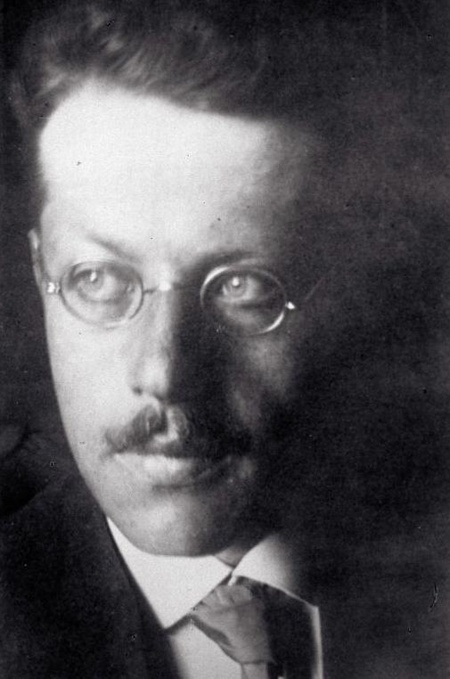
December 25 1886 – 28 Kislev 5647
Franz Rosenzweig was born.
The child of an assimilated family from the German town of Kassel, Rosenzweig decided at the age of 27 to become an observant Jew – after flirting for a period with Christian Evangelism. It was apparently after experiencing the atmosphere of Yom Kippur, the holiest day of the Jewish year, in an Orthodox synagogue that he renounced his earlier decision to convert to Christianity and began studying Judaism instead.
Rosenzweig’s world view formed in the crucible of World War One, in which he volunteered for service in the German army and found himself employed in maintenance in an air-force base in the Balkans. He sent post-cards home from the Macedonian front which became the basis for his most famous book “The Star of Redemption.” This extremely dense work of philosophy explores the dynamics of a possible relationship between God, humanity, and the world, as they are connected by creation, revelation and redemption. If one makes a diagram with God at the top, and the World and the Self below, the inter-relationships generate a Star of David map.
After the war Rosenzweig continued on his path toward Orthodox Judaism, opening The Lehrhaus, an open House of Jewish Learning, which produced a number of prominent Jewish intellectuals. His most famous collaboration arose from his friendship with Martin Buber, with whom he produced a new German translation of the Bible.
In 1922 Rosenzweig was diagnosed as suffering from motor neuron disease (ALS), resulting in his death seven years later on December 10 1929 (8 Kislev) in Frankfurt. Throughout the growing paralysis afflicting him he used blinking to indicate letters and words to communicate with his wife and colleagues, including Buber, refusing to despair of continuing his life’s work.
